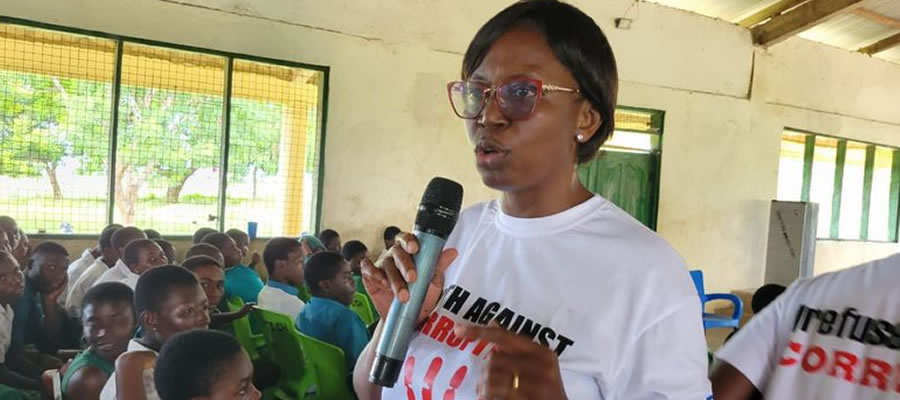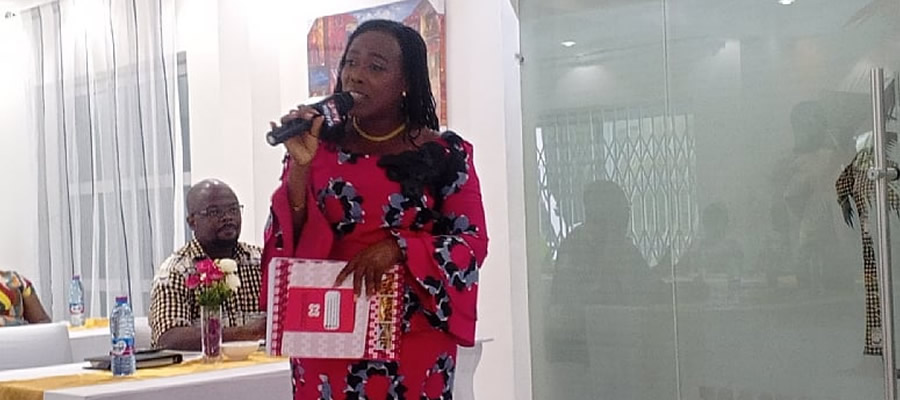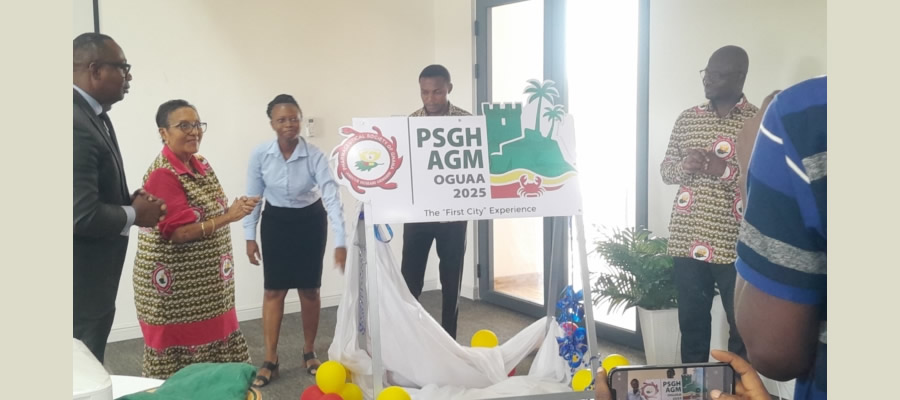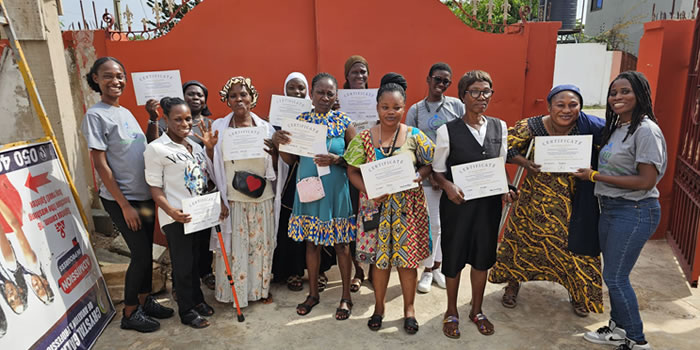

Education
The city has a total of 573 basic schools made up of 116 Creches / Nurseries (4 public and 112 private), 175 kindergartens (66 public and 109 private), 162 primary (70 public and 92 private) and 120 junior high schools (63 public and 57 private). There are also 11 Senior High Schools and one technical and vocational institute as depicted in the table below.
Table 6: Number of Schools
Together, the basic schools have total enrolment of 49,935 with gender parity ratio of 1.03 and 0.99 for public and private schools respectively as depicted in the table below.
Table 7: School Enrolment as at December, 2022
Education as a social service is considered as the key to over-all human development. It is therefore imperative that any investments in development must start with education.
It has been indicated that that Ghana’s educational system is comparable to countries with fast growing economies at all levels except at the basic level (World Bank 1993). According to the returns from the 2000 Population and Housing Census, 53.3% of Ghanaians aged 15 years and older are literate in English or a known Ghanaian Language.
In English alone, the rate is 46.9%. With half of the country’s population being illiterate, a lot of emphasis has to be given to education. This should be at all levels including districts. The metropolis area has schools, which correspond to the three-tier educational system in the country. These are:
- Basic Education Schools (or First Cycle Institutions) comprising Kindergarten,
- Primary and Junior Secondary Schools (JSS);
- Second Cycle Institutions (Secondary, Commercial, Technical and Training Colleges)
- Tertiary Institutions (Universities and Specialist Colleges or Diploma Awarding Institutions)
- The Municipality has four education circuits, namely:
- Cape Coast Zone (i.e. Eastern including Ekon);
- Aboom Zone (i.e. Cape Coast Central)
- Bakano zone (i.e. Cape Coast West stretching up to the University.
- Pedu zone (i.e. Cape Coast North)
The Municipal Education Directorate is currently housed in a building, which belongs to the Municipal Authority. The directorate has occupied this building for the past 24 years and it is not anticipated that a new building would be put up within this plan period. However, the building and all other structures used by the Directorate need regular maintenance.
School Statistics
By June 2002, the Municipal Education Directorate had 65 Pre-Schools including 21 Private, 89 Primary Schools including 17 in the Private Sector, 81 JSS with 15 being Private, 10 Senior Secondary Schools (SSS), one Technical School, one Polytechnic and one University (see Table 4).
Enrolment levels are very high in schools in the Municipal District because people generally perceive the schools to be among the best performing institutions in the country. It is not surprising that second cycle institutions are always over-subscribed whilst many other across the country do not get their full quotas. Even at the basic level, enrolment is generally high with girls slightly ahead of boys, a phenomenon that has persisted over the years in many part. However, the trend changes at the second cycle level and boys become a dominant force in the school registers .
Given the need to balance the scale for both sexes, it is extremely important to institute programmes that would discourage the high dropout rates of girls before age 18 years. With Teacher-Pupil ratio averaging 1: 34 for the Primary and 1:18 for the JSS. The staffing situation is certainly above that for most other Districts in the region and country but just below the national average of 1:35. As at the close of December 2002, all the public schools had adequate numbers of both teaching and non-teaching staff.
For instance, there were a total of 779 trained and 52 untrained teachers manning the 140 government-assisted Primary and Junior Secondary Schools (Appendix 2). Since the quality of teaching is determined by the quality of professional teaching staff, it is important that the District has a large crop of trained professionals.
Similarly, some 516 and 551 teaching and non-teaching staff manned the second cycle institutions excluding Cape Coast Technical. Indeed, schools like Ghana National, Mfantsipim, St. Augustine’s, Adisadel, Wesley Girls’ and Holy Child had teaching staff numbers ranging between 40 and 83 and non-teaching staff of 16-92 persons.
Table 3: Cape Coast Municipal District, school statistics (2002)
Category
Number Per cent of total
Pre-school 45 22.6
Primary 72 36.2
Junior Secondary 68 34.2
Second cycle 12 6.0
Polytechnic 1 0.5
University 1 0.5
Total 199 100
The performance of the Private Sector is also impressive, especially at the basic level and needs to be encouraged and improved so as to ease congestion in the public school system. The teaching profession, like nursing, attracts females and the Cape Coast District demonstrates this, at least, at the basic level. Appendix 2. clearly shows that there are more female teachers at the Primary School level. For a total teacher population of 431 in January 2003, there was one male teacher to four female teachers.
The female component at certain education circuits was even higher. For example, in the Bakano Education Circuit, there were 11 male teachers compared to 59 females in the Primary schools. At the J.S.S. level, the situation was slightly different as the ratio was quite well balanced in most schools. Even in a few of the Education Circuits such as OLA (48:40), Aboom (43:32), Pedu/Abura (34:23) and Effutu (28:21) the ratios were slightly in favour of males.
School Participation Rate (SPR)
School Participation Rate (SPR.) is defined as the total school enrolment in any school at a particular point in time divided by the total population in a particular age-cohort. In 1995 the SPR for 10-14 year olds was found to be 52 in Cape Coast . The rate was described as extremely low for an urban area.
The Boy-Girl ratio still favours the former at the basic level except in the case of Pre-Primary level.
There are more female teachers in schools located in the central part of Cape Coast than at peripheral settlements.
Notwithstanding the satisfactory teacher situation in the public schools, more teachers are needed to cope with expansion of schools and the high rate of Teacher-Pupil ratio.
The area has a relatively low school participation rate of 52.5%. This is unexpected of an area that is supposed to be the cradle of education in the country.
Changes Observed (Kindergarten)
Gross Enrolment Rate
The Gross Enrolment Rate for the period between 2003/2004 and 2005/2006 was not stable. It showed a fluctuating trend. It decreased from 80.0% in 2003/04 to 74.9% in 2004/05. However, it increased to 105.2% in 2005/06. The targeted GER for 2005/06 as given in the School Mapping Report was 83.6%, thus, fallen below the 2005/06 actual GER by 23.1%.
The Male Gross Enrolment Rate (MGER) showed a fluctuating trend for the years under review. The MGER was 83.9% for 2003/04 but fell to 78.1% the following year and increased in 2005/06 to 109.3%, which was 25.7% more than the target set for the same year.
The Female Gross Enrolment Rate showed a slight fall of 4.5% between 2003/04 and 2004/05 school years. For 2005/2006, however, the FGER shot up from 71.8% to 101.3%, showing an increase of 29.5% and also exceeding the target set for 2005/06 by 20.7%.
Gender Parity Index (GPI)
The GPI slightly increased consistently over the three-year period between 2003/04 and 2005/06 academic years. It increased by 0.1 that is from 0.91 in 2003/04, 0.92 in 2004/05 and 0.93 in 2005/06 but failed to reach the target of 0.96.
Gross Admission Rate
This gives an indication of children admitted to KG 1 as against number of age four year olds in the Municipality. Thus a GAR of 91.3% showed that there are more age fours that are not in school. This rate dropped to 82.3% in 2004/05 and increased to 119.9% in 2005/06 exceeding the target set by 35.0% in 2005/06. Female Gross Admission Rate decreased from 87.3% in 2003/04 to 79.5% in 2004/05. The FGAR increased in 2005/06 by 38.4% to 117.9%, and this was higher than the target set for 2005/06.
Gender Parity Index for GAR
GPI increased from 0.92 in 2003/04 to 0.93 in 2004/05, it then improved by 0.04 in 2005/06 and exceeded the target set for 2005/06 by 0.03.
Pupil-Teacher Ratio
Public - The pupil teacher ratio for public KG schools in the Cape Coast Municipality was 19:1 in 2003/04 and 10:1 in 2004/05, it then increased to 24:1 in 2005/06. Percentage of trained teachers as at 2005/06 was 46.0%, showing 4.7% more than that of 2004/05 and 2.9% less than 2003/04.
Private - Situation of trained teachers at the private schools kept reducing from 13.4% in 2003/04 to 10.2% in 2004/05 then to 8.5% in 2005/06. PTR at private KG’s, however, showed a fluctuating trend. It fell from 15:1 to 6:1 then increased to 17:1 in 2003/04, 2004/05 and 2005/06 respectively.
Causes of the changes in the indicators
A study of the indicators showed that the GER fell from 87.6% in 2003/04 to 84.4% in 2004/05. In the same way, the GER for male decreased from 91.2% in 2003/04 to 83.9% in 2004/05. The GER for female remained relatively stable. It increased by 0.8%. In all, however, the GER for both sexes showed a relatively appreciable increase from a low GER of 83.9% in 2004/05 to 109.3% in 2005/06 for male whilst the GER for female increased from 84.9% in 2004/05 to 101.3% in 2005/06.
These increases in GER between 2004/05 and 2005/06 academic years might be due to the introduction of the capitation grant in public schools.
Measures to improve the Trend
To improve the trend in each indicator the Municipality will strengthen its enrolment drive campaigns through the PTA/SMCs. Social mobilization and advocacy programmes should also be encouraged through the Girl Child Education Unit.
Changes Observed (Primary School)
Gross Enrolment Rate
Though the trend fluctuated, the rate of change was not appreciable. For instance, the rate fell by 0.2% in 2004/05 it rose by 0.6% in 2005/06academic year, going beyond the target by 6.1%.
Female Gross Enrolment Rate - The FGER also shows a decrease rate of 1.8% between 2003/04 and 2004/05 but increased to 106.9% from 101.5% in 2005/06. The actual FGER exceeded the target for 2005/06 by 5.5%.
Gender Parity Index
This was stable between 2003/04 and 2004/05 school years by maintaining an index of 0.96, however it dropped slightly by 0.01 in 2005/06 and failing to reach the target for 2005/06 by 0.01.
Gross Admission Rate
Gross Admission Rate was not stable. It fell by 2.2% between 2003/04 and 2004/05. It however it showed quite an appreciable increase of 18.7% between 2004/05 and 2005/06 school years.
Female Gross Admission Rate - This experienced a slight decrease of 1.6% between 2003/04 and 2004/05. In 2005/06 it increased by 20.7% over 2004/05 FGAR of 95.0%.
Pupil/Teacher Ratio
Public: - The PTR experienced slight changes between the years under review. It fell by 0.2 in 2004/05 but rose by 2.2 in 2005/06. The highest PTR registered was 54:1which occurred at Cape Coast Presbyterian School, whilst the lowest being 2:1 was recorded at School for the Blind.
Private: - For private schools, it rose slightly but steadily 2003/04 to 2005/06 academic years.
Core Textbooks/Pupil Ratio
The pupil textbook Ratio for the core areas of Mathematics, English Language, and Integrated Science was 0.95:1, 0.96:1 and 0.99:1 respectively. It must be stated that apart from Mathematics textbooks which were provided for primary 1 – 6, English and Integrated Science covered lower primary and upper primary respectively.
Percentage of Trained Teachers
The percentage of trained teachers in public schools decreased from 95.6% in 2003/04 to 92.9% in 2004/05, it further decreased to 91.5% in 2005/06.
For private schools, though there was a decline of 0.3% in the percentage of trained teachers between 2003/04 and 2004/05. It picked up in 2005/06 from 18.1% to 22.5% indicating a rise of 4.4%.
Causes of the changes in the indicators
These increases in GER between 2004/05 and 2005/06 academic years might be due to the introduction of the capitation grant in public schools.
Measures to improve the trend
To improve the trend in each indicator will strengthen its enrolment drive campaigns through the PTA/SMC’s. Social mobilization and advocacy programmes should also be encouraged through the Girl Child Education Unit.
Changes Observed (Junior Secondary School)
Gross Enrolment Rate
From 101.6% the GER fell by 3.6% for the period of 2003/04 and 2005/06, but it improved by 12.5% from 2004/05 to 2005/06, exceeding the projected target of 104.8% by 5.7%.
Female Gross Enrolment Rate - The FGER for the period under review was not stable. It decreased by 3.9% from 2003/04 to 2004/05, however it increased by 12.3% to 110.6% in 2005/06. It exceeded the 2005/06 targets of 106.8% by 3.8%.
Changes Observed (Senior Secondary School)
Gross Enrolment Rate
The Gross Enrolment Rate at the Second Cycle Institutions was above 100% for all the three years of review, the GER increased from 135.7% in 2003/04 to 151.4% in 2004/05. However, the GER decreased by 24.0% in 2005/06.
Male Gross Enrolment has been very encouraging in the District, as at 2003/04 it was 173.5% and increased by 1.9% in 2004/05. The MGER however, decreased to 149.9% in 2005/06. Female Gross Enrolment Rate (FGER) was 97.1% in 2003/04; it then increased by 29.5% to 126.6% in 2004/05 academic year but dropped to 104.2% in 2005/06.
Gender Parity Index
Gender Parity Index for 2003/04 was 0.56 but increased to 0.72 in 2004/05 school year, it then dropped to 0.69 in 2005/06.
Gross Admission Rate
There was a rise in the GAR by 8.1% from 131.2% in 2003/04 to 139.3% in 2004/05 academic years, it then dropped to 139.0% in 2005/06. MGAR has showed a decrease over the years. At 168.9% in 2003/04, it saw a fall of 4.1% in 2004/05; it further went down to 102.3% in 2005/06. The FGAR increased appreciably by 20.3% to 113.7% between 2003/04 and 2004/04 academic years but then dropped to 120.6% in 2005/06.
Changes Observed (Technical, Vocation, Education and Training)
Gross Enrolment Rate
This was relatively low between 2003/04 and 20005/06 in Technical and Vocational Institutions. The rate as at 2003/04 was 27.2%, it then increased to 24.7% in 2004/05 and dropped to 20.0% in 2005/06.
Date Created : 5/22/2025 4:50:08 AM













 facebook
facebook
 twitter
twitter
 Youtube
Youtube
 +233 593 831 280
+233 593 831 280 0800 430 430
0800 430 430 GPS: GE-231-4383
GPS: GE-231-4383 info@ghanadistricts.com
info@ghanadistricts.com Box GP1044, Accra, Ghana
Box GP1044, Accra, Ghana